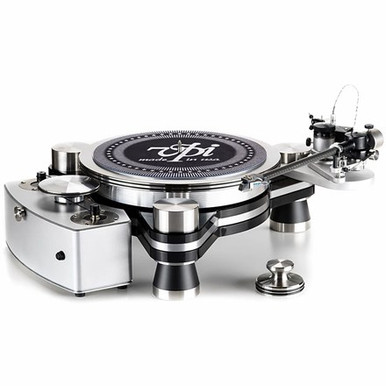Warning to the sensitive: involves tonearm pods.
I know this topic is beyond the pale to some, but my tables cannot take a second tonearm (once upon a time, though, they did), and I enjoy variety in cartridges. I have bought four pods so far from Lee Drage at Acoustand, two plain and two with built in micrometer VTA adjustment. But I discover the airspace around the tables is too congested with six arms, as well as introducing some grounding issues. So, as I told pindac the other day, I started to experiment with using two pods per tonearm. Not just a simple 'if one is good then two must be better' but for practical reasons. Firstly, a pod resting on three spikes weighs about 10lb, but it doesn't take much pressure on the distal end of the arm panel to cause it to tip. One can spoil a carefully set up alignment that way, and if it continues tipping a disaster could happen. So, I thought, why not place a pod under the distal end of the tonearm panel, and prevent that happening?

But then a second thought came along: if the second pod were firmly coupled to the panel, I would double mass and damp vibrations even more. That's a bit theoretical to me, as my oak chest weighs ~350lb and I can stamp on the floor next to it and not disturb a playing stylus. But rigidity is rigidity. So I asked Lee if he could make me a double ended panel with an SME mount centred in the middle. Roughly, like this:

He agreed, and pointed out I would have to forego the VTA adjustment, unless one were to place a screw at each end! I can use the SME mount itself to adjust VTA. though, so that's OK.
Here, finally is the question: he thinks I am simply introducing twice as many vibrations (external, I think he means) into the tonearm by having it rest in two sites on the oak chest, and that I would be better off having one end of the tonearm panel free-floating. My view is that rigidity is paramount, and if a built-in tonearm on a table is firmly coupled to the table then I am moving a bit closer to that ideal by having a firmly coupled chest-table-pod system. What say you?





